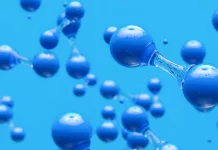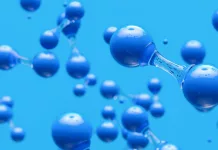The Rise of Green Hydrogen and the Promise of Photoelectrochemical Cells
The world of green hydrogen is abuzz with news of the first billion-dollar unicorn startup in the field. While this is exciting, there’s another exciting development happening with photoelectrochemical cells. But first, let’s talk about hydrogen. Hydrogen is a vital component in various industries, including fuels, fertilizers, pharmaceuticals, and more. However, the current global supply chain for hydrogen heavily relies on fossil fuels like natural gas and coal.
The emergence of green hydrogen, made possible by the declining cost of wind and solar power, offers a sustainable solution. Green hydrogen is produced through electrolysis, where hydrogen gas is extracted from water with the help of renewable energy sources. This presents an opportunity for innovators to develop more efficient and affordable electrolysis systems.
One such innovator is Electric Hydrogen, a US startup that recently raised $380 million in a funding round. The company aims to build a better electrolyzer and has attracted the attention of New Fortress Energy, a global energy startup. New Fortress Energy plans to construct a major green hydrogen production facility in Texas using Electric Hydrogen’s electrolyzers.
While electrolysis has been around for centuries, a new player is emerging on the scene: photoelectrochemical cells. These cells use sunlight to catalyze a chemical reaction in water, eliminating the need for separate electricity sources. In theory, photoelectrochemical cells can be more efficient and cost-effective than traditional electrolysis systems.
The potential of photoelectrochemical cells extends beyond large-scale applications. They can be downscaled for household and commercial use, similar to HVAC systems or kitchen appliances. The concept of an “artificial leaf” using photoelectrochemical technology has been explored for many years, with recent advancements in nanometer-scale fixes and corrosion-resistant materials.
Researchers at the University of Tübingen in Germany have made significant progress in developing an artificial leaf. They achieved an efficiency of 18% in converting sunlight to usable hydrogen energy, surpassing earlier attempts. Although a US team still holds the record at 19%, the Tübingen team’s achievement is notable for its potential for decentralized green hydrogen production.
Further research and development are needed to improve stability, cost, and scalability of photoelectrochemical cells. The German government is supporting these efforts through the H2Demo program, while the US Department of Energy has established a working group and the Liquid Sunlight Alliance to accelerate progress in the field.
While the world moves towards a sustainable future, political obstacles remain. Republican leadership in Congress has focused on different priorities, diverting attention from clean energy initiatives. Nonetheless, the strides made in green hydrogen and photoelectrochemical cells hold great promise for a cleaner and more sustainable energy future.



























